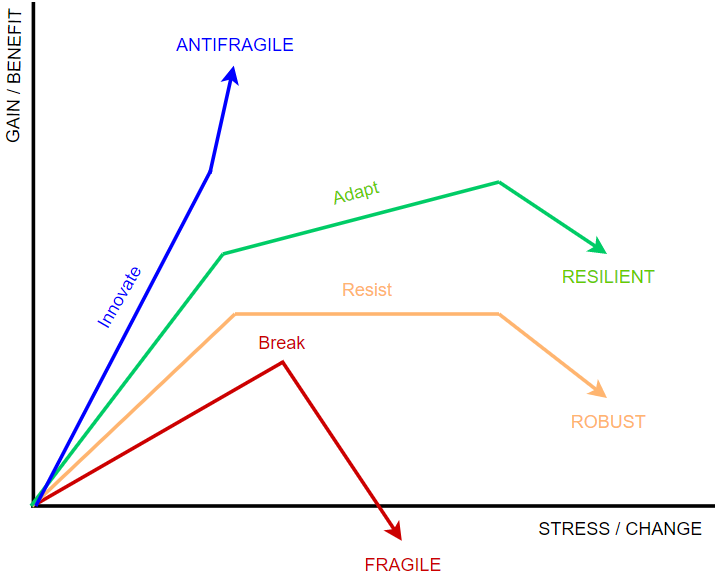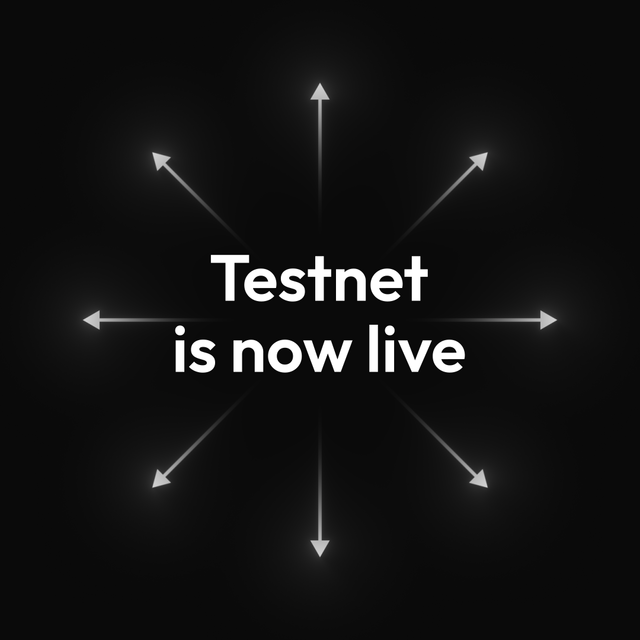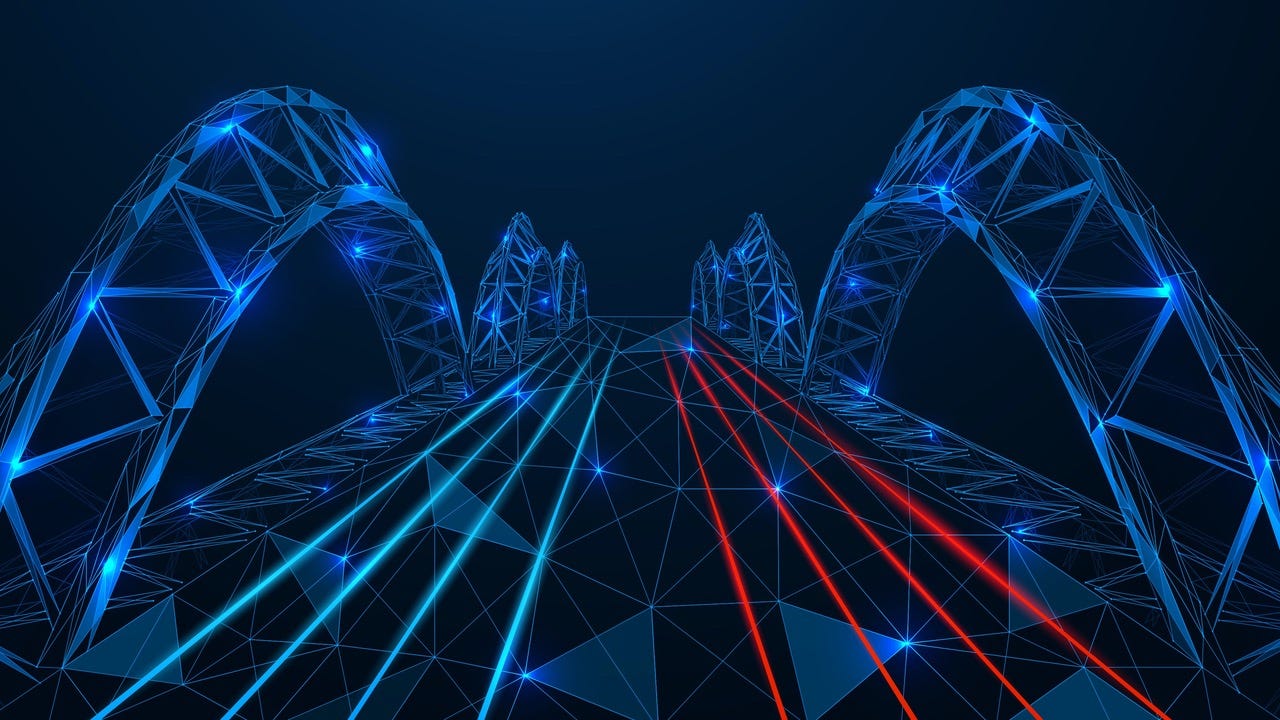How is Cardano able to withstand shocks?
Cardano is being built as a mission-critical system because it must not fail. Millions, perhaps a billion people may one day hold their wealth on Cardano. This places high demands on the IOG team in terms of building the...

Cardano is being built as a mission-critical system because it must not fail. Millions, perhaps a billion people may one day hold their wealth on Cardano. This places high demands on the IOG team in terms of building the system carefully and with quality. It must be resilient to external events and withstand shocks. A fatal failure of the system would have negative consequences for all users, who could be economically ruined. People say Bitcoin is antifragile. Is Cardano also antifragile and able to withstand shocks? What characteristics are important for building a resilient system?
TLDR:
- Antifragile things are not static and unchanging, but rather capable of benefiting from shocks and adapting to new conditions.
- The Internet can be considered a resilient system because it has never had a fatal failure and is constantly being improved.
- Blockchain is a complex technology. The overall quality of the system should be judged by the worst score achieved for the selected properties.
- Cardano is a robust system. The question is whether it is resilient.
What is antifragility?
The term antifragility was coined by Nassim Taleb in his book “Antifragile: Things That Gain from Disorder”. Nassim initially believed that Bitcoin was antifragile. Later, he turned his back on Bitcoin. However, part of the Bitcoin community still believes this narrative.
According to Taleb, some things benefit from shocks. They thrive and grow when exposed to volatility, randomness, disorder and stress. They love adventure, risk and uncertainty. The author of the book on antifragility noticed the ubiquity of this phenomenon and was bothered that there was no word for the exact opposite of fragility. He started calling it antifragility. Fragile things disappear or are replaced. Antifragile things survive for centuries without much change.
Nassim Taleb wrote in his book Antifragile:
Antifragility is beyond resilience or robustness. The resilient resists shocks and stays the same; the antifragile gets better. The antifragile loves randomness and uncertainty, which also means — crucially — a love of errors, a certain class of errors.
A key feature of antifragility is the ability to change over time. Examples Taleb gives include culture, the political system, technological innovation, corporate survival, the legal system, bacterial resistance, etc. Antifragile things are not static and unchanging, but rather capable of benefiting from shocks and adapting to new conditions.
If it is possible to define key system properties and metrics by which we can judge improvement or deterioration, then the properties of antifragile things must improve over time. Assuming that shocks occur, the properties must not just stay the same, or even worse, degrade.
To understand antifragility, it is important to understand the meaning of the terms robust and resilient. A very simple analogy will help. Imagine you are hammering on an old stone bridge. This will be a test of the bridge's resilience. We'll see how the bridge overcomes this shock. The key feature we will assess is the bridge's statics and its original condition. The bridge has historical value, so we are concerned that it remains in its original condition for as long as possible.

A thing or system is considered robust if it maintains stability and performance indicators within a certain tolerable range under disturbance conditions without using adaptive methods.
If you start hitting a bridge with a hammer, nothing serious is likely to happen in an hour of your efforts. Maybe the surface covering will come off, or you might manage to pry a few stones out of the structure. It won’t have a major effect on the bridge’s function. People will continue to walk on it and not notice anything. The bridge is capable of withstanding and surviving short-term hammering. In terms of historical value, the damage is minor and easily repairable. Nevertheless, the bridge is in worse condition than before the hammering.
A thing or system is considered to be resilient if it is able to withstand severe disruption within acceptable degradation parameters and recover in an acceptable time.
You invite your friends and hammer the bridge with heavy hammers all day long. You manage to knock down one of the many pillars. The bridge’s statics is compromised. You’ll fall down from fatigue, and in the meantime, the repairmen will come and build a new pillar. The bridge will be structurally the same as before, perhaps even better thanks to the modern materials the repairmen have used. The key feature is the ability to quickly overcome damage and adapt to new conditions. The new pillar won’t be so easy to break with hammers. The bridge's statics have remained the same, or may even be better. However, in terms of historical value, the bridge has suffered serious damage.
If we were to assess only the bridge's statics, we could conclude that the bridge is resilient, as it has withstood both small and large shocks. The new pillar was better than the old one. There will always be a team of experts who are ready to repair the bridge in similar cases. The historic value of the bridge has suffered in both cases, so we could say that the bridge is either fragile or at best robust (the bridge has many other original pillars). The overall assessment would be that the bridge is fragile, as you could think of many ways to destroy the bridge forever.
What if the bridge was antifragile? If we forget the laws of physics and the historical value for a moment, we can imagine a bridge that would be stronger and more resilient every time a hammer hit it. Such a bridge would be able to withstand the elements and any load. It is probably clear to you that mankind has not (yet) succeeded in building such a bridge. Why? Because the bridge would have to be able to innovate itself in some way. It is not enough to resist or adapt but to become better than before. The next time you tried to hit the bridge with a hammer, nothing would happen and maybe the bridge would hit you.
Can blockchain networks be antifragile?
For a thing to be antifragile, it is not enough for it to withstand a shock or adapt to new conditions. The shock must qualitatively improve the thing according to defined metrics. Achieving such a state in the case of any blockchain network is essentially impossible. Bitcoin is definitely not antifragile. This claim is exaggerated and is a false narrative.
We talk about resilient networks when they can provide continuous operation and are highly resistant to disruption. If a problem occurs, the network is able to continue to provide services regardless of degradation, and rapid remediation is possible.
The Internet can be considered a resilient system because it has never had a fatal failure and is constantly being improved. During the COVID-19 pandemic, traffic increased dramatically as people started streaming and using video conferencing more. The spike in Internet usage did not cause any problems. Now the Internet is in an evolutionary phase that we call Web2. Blockchain technology has the potential to disrupt the way the Internet works. We refer to this enhancement as Web3. Individual protocols and services are disappearing to give way to new ones. Everything is changing and improving. The Internet will remain with us forever. According to Taleb, is the Internet antifragile?
In the case of blockchain networks, we will discuss not only the ability to recover quickly from an attack but also the properties that have a long-term character. For example, gradually decreasing decentralization or security budget can be a long-term process and the moment an attack occurs the network is forever compromised. Reputation and trust are critical for users.
Blockchain networks are protocols that use the internet. In the context of the paper, we wonder if Cardano is a robust or resilient system. The quick answer would be that blockchain networks have existed for too short a time to know the answer. Their adoption is still low, so the biggest shocks are yet to come. If we accept this, we can continue our search for an answer.
Cardano, Bitcoin and no other decentralized blockchain network are antifragile. Many people confuse the term antifragility with longevity. They argue that if a network has been around long enough, it must be antifragile because it has overcome all obstacles. Taleb defines antifragility differently and speaks about improving things based on shocks. Network protocols only need to be robust to exist for a decade or more.
For blockchain networks, we can observe various properties in the context of antifragility. For example, the immutability of monetary policy, decentralization, security, censorship resistance, scalability, decentralized governance, etc. If we choose only the immutability of monetary policy, we can conclude that almost all decentralized networks are resistant to changing monetary rules. But there is a catch. To adequately substantiate this claim, we need to look at things like the quality of decentralization and security, the long-term sustainability of the economic model, and many other factors. Blockchain is a complex technology and therefore it is important to consider it holistically when assessing antifragility.
It may turn out that monetary policy can be indeed antifragile, but only if network decentralization and security budget are (at least) robust or resilient. However, as with our bridge example, we must ask whether one property can be antifragility if all other properties of the system are not. Thus, if security is only robust, we should rightly say that monetary policy is also only robust.
The overall quality of the system should be judged by the worst score achieved for the selected properties. No property should be deliberately omitted.
Is Cardano a robust or resilient system?
Let's first define the key features that are important for Cardano. At the heart of the project are decentralization and security. Other important properties are scalability and long-term economic sustainability. The quality of the other properties will largely depend on the ones mentioned above.
The properties chosen are important in the context of shocks that can be expected in the future.
Based on historical experience, we know that the decentralization of blockchain networks tends to degrade over time. Bitcoin was most decentralized before the emergence of ASIC hardware and pools. Now this key feature of it is stagnating or degrading. It is certainly not improving.
Security can be looked at from different angles. Cardano must survive every conceivable attack, including the 51% one. The team is responsible for analyzing all known and foreseeable attack vectors and must build a system to withstand these attacks. New attack vectors may emerge over time. Some cryptographic primitives may become obsolete and need to be replaced. One day it will be important to resist the threat of quantum computers. From a decentralization perspective, it is not only the network consisting of pools and delegators that is important but also the team. Every software requires maintenance and upgrades. A team capable of innovating technology is an integral part of security.
Every blockchain network needs to have a sufficient security budget and the ability to generate revenue. Only the utility can ensure long-term economic sustainability. In the context of Cardano, this is related to scalability. All current decentralized networks (we are not talking about those that are not decentralized) have a scalability problem. As soon as the number of users goes up, networks stop being able to handle the rush of transactions. This is one of the shocks we have historical experience with and is very likely to occur again. Cardano's scalability must improve and the utility must grow. No one but the team will do it.
Let's think about whether Cardano is robust or resilient.
It is fair to count the existence of the network only from the transition to PoS. Cardano started using this consensus in 2020. Since then, the number of registered pools and the number of delegators has been growing. One could say that decentralization is stagnating or rather growing, but it is certainly not dramatically decreasing. At the time of writing, the Binance and FTX drama is ongoing, and even then, network decentralization is not getting worse. The live stake is 0.5% higher than the active stake. The security of the Cardano network is largely tied to decentralization. The decline in the market value of ADA coins is not as much of a shock to security as it is for PoW networks. For those, a sharp drop in coin value can force miners to shut down their facilities. In extreme cases, they can go bankrupt if mining is not profitable for a longer period of time.
Cardano is at least robust. Can we say that it is also resilient? The topic of decentralisation is constantly debated in the community. Suggestions are made about what parameters to change to increase decentralization, see the debate about changing the minPoolCost parameter. By modifying the parameter K it is theoretically possible to increase the preferred number of pools. Cardano can adapt to new needs or conditions, so we can conclude that it is resilient.
No one has been able to compromise the Cardano network or even any decentralized application. The IOG team published a study that looks at the ability to detect the 51% attack and autonomously recover from it. If this feature were implemented, the network would approach resilience.
Ouroboros Leios PoS will significantly improve the scalability of Cardano. At the moment, the network could not handle the large influx of users. Users would be forced to try to submit transactions multiple times in a row. The network would not crash because of this (this is tested), but neither would it be able to meet all users' requests in a timely manner. The network is now robust. Once Leios PoS is implemented, it will be better off, i.e. more resilient.
Greater scalability, along with other innovations that will increase utility, will allow Cardano to generate more revenue than now. Adoption is an important factor. Without users paying for services, no network has a chance of generating revenue. In addition, the cost of running PoS networks is 99.9% lower than PoW networks, so Cardano may not have as big a security budget problem as PoW networks with a capped number of native coins.
Currently, Cardano is robust as the rewards for pool operators and delegators are taken from the reserve (from monetary expansion) and this may work for a long time to come. Cardano will be resilient if it generates enough revenue and doesn't depend on coins from the reserve, which has a limited lifetime (the number of ADA coins is capped).
We can conclude that Cardano is a robust system and can be resilient under certain circumstances. Note how important the team, pool operators, delegators and community are. One can expect certain properties to degrade over time. This is most evident with decentralization and security budget. No blockchain protocol can autonomously improve these properties. It always depends on the behaviour of people, more specifically the pressure of the community that will call for improvements and the ability of the team to improve the properties.
Note that other commonly used Internet protocols are not as community-dependent. They are only dependent on the team. This is due to the fact that they are not decentralized and do not depend on an economic model.
A resilient system must be able to recover from shocks. Features that may have been degraded by the shock must return to their previous level, or even improve. A 51% attack is a type of shock that is relatively fast and networks must withstand it to be considered robust. If such an attack has not yet occurred, which is true for both Cardano and Bitcoin, we don't really know what the outcome of such an attack would be. We can only assume. The fact that an attack has not occurred can be considered robustness.
Some shocks can be a long-term process. In the case of decentralization, for example, we can track trends over a longer period of time and evaluate them. If this key feature degrades over time, the system is not robust, but fragile. The team, in collaboration with the community, must work hard to make improvements. Gradual degradation may result in the demise of the system.
In general, it is difficult to build a decentralized network that keeps all properties the same in the long term. Properties are more likely to change dynamically. They will in some cases grow, in other cases decrease. If a protocol does not change and is static, it can only be robust because it is not able to adapt to new conditions. However, it is possible that the conditions will change and the property will spontaneously return to its original level. Resilient systems need to be robust but at the same time capable of adaptation. Adaptation may require team intervention. If the project has decentralized governance, and Cardano is moving towards this, the team intervention can be considered a centralized act.
Conclusion
To state that Cardano, but perhaps also Bitcoin and other networks, are a robust system is a very good result. Some may be disappointed that these networks are not antifragile. Such a system, at least by Taleb's definition, is probably not possible to build with current knowledge of technology. In our opinion, Cardano has a chance to become a resilient system. To state this with a higher degree of certainty, we would need to conduct a much deeper analysis.
Delegate Your Voting Power to FEED DRep in Cardano Governance.
DRep ID: drep12ukt4ctzmtf6l5rj76cddgf3dvuy0lfz7uky08jfvgr9ugaapz4 | We are driven to register as a DRep by our deep dedication to the Cardano ecosystem and our aspiration to take an active role in its development, ensuring that its progress stays true to the principles of decentralization, security, and community empowerment.DELEGATE VOTING POWER!







